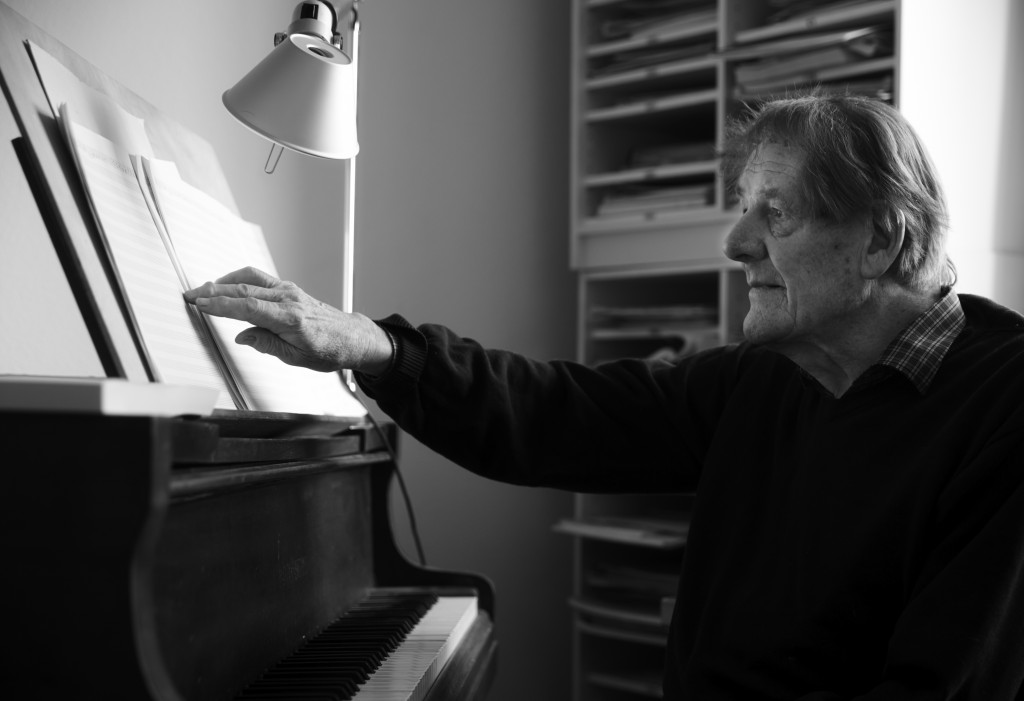Momenta Quartet: Night Descending Like Smoke
- String Quartet #8
Night Descending Like Smoke * - String Quartet #3
Three Miniatures * - Playground
- String Quartet #5
Inscape * - Tjampuan *
- String Quartet #10
Harvest Timeless ( * U.S. Premiere )
Program

photo by Lars Skaaning
Nørgård’s ten string quartets comprise a major aspect of his musical legacy. The earliest work on the program is String Quartet #3, Three Miniatures from 1959, when the music of Scandinavian composers like Sibelius, Holmboe and Nielsen bore a huge influence on the young composer. Nørgård’s radically different works from the Sixties, represented here by his String Quartet #5, Inscape, reveal a composer discovering and synthesizing the world of European Modernism with his Scandinavian identity. One of Nørgård’s few works to be composed primarily with microtones, Inscape also points toward his major Infinity Series works to come in the Seventies.
Nowhere is the composer’s mastery of the medium more apparent than in his late quartets. The powerful and deeply moving String Quartet #8, Night Descending Like Smoke, reworks material from his harrowing chamber opera Nuit des Homme (‘The Night of Mankind’). Violent and devastating, Night Descending Like Smoke is balanced on the program by the almost pastoral String Quartet #10, Harvest-Timeless. The original Danish title Høsttild translates literally to “autumn crocus”; Nørgard employs the Golden Ratio throughout the recursive single-movement piece, which highlights the composer’s ability to create hierarchies of melody and texture, exalting the complex beauty of the natural world.
In addition to his ten quartets, Nørgård has written many works for other configurations of strings, including the virtuosic Playground for solo violin, and Tjampuan, a duet for violin and cello. Drawing on time spent in Bali, Tjampuan means “where two rivers meet” in Indonesian, and in the words of the composer, “as two rivers meet, the two individualities integrate their soloistic expressions to one.” In these two lighter works, one can hear a continuing thread from Nørgård’s early Scandinavian period, as well as his jubilant adoration for nature, which he communicates simply and directly.
